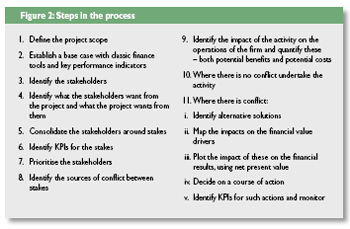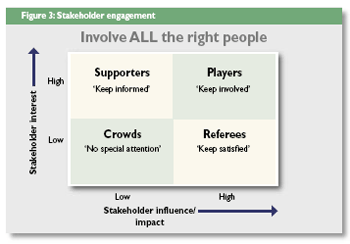Tuesday 22 January, 2008
Corporate responsibility can no longer be viewed as a
discretionary activity. Ethical behaviour goes hand in hand with
reputation and to ignore its strategic implications is, at best,
short-sighted.
It is not so much whether corporate responsibility should be
incorporated into organisational life - but how. Corporate
responsibility should be approached like any other area of business
decision making, with a systematic approach to priority assessment and
benefits analysis.
To date, much of the research in this field has focused on whether “good” firms make better returns in the stock markets - but stock markets are not actually efficient ways of measuring value.



Corporate responsibility is a key issue for modern businesses; from
questions about ethical sourcing, pollution and greenhouse gases, to
responsible hiring and marketing practices.
Generically, many arguments have been made for the business benefits that flow from being ‘responsible’. Some of these include:
- Better reputation with customers,
- Enhanced employee relations, resulting in improved recruitment and retention of talent,
- Reduced operating costs, and
- Lower business risk.
To date, much of the research in this field has focused on whether “good” firms make better returns in the stock markets - but stock markets are not actually efficient ways of measuring value.
A far better way of establishing a companies’ value is to look at the
impacts on future cash flow - this is, after all, how finance directors
evaluate capital projects and how stock market analysts assess the value
of firms.
Therefore what managers need to do systematically, is assess the impact of stakeholders on their firms.
Two-way relationships
When managers think about stakeholders it is often about what
stakeholders want from the business - often for the business to stop
doing something or to give them money.
Managers do not always evaluate what the business wants from
stakeholders - this might be a licence to operate or more loyalty from
employees or from customers.
Figure 1 shows the basic idea of mapping how stakeholder issues affect
company value, by focusing on the drivers of shareholder value - most
often sales, costs, time and volatility.

But if it’s all so simple - why are so many problems being reported? We
have looked further at the processes involved in making the trade offs,
and Figure 2 sets out these steps.

Two key steps seem to cause problems.
-
First, the sheer number of stakeholders and their competing issues. This degree of complexity can be reduced by looking at the stakes, rather than the stakeholders.
-
The other key problem is prioritising stakes and stakeholders. Different firms go about this in different ways, often mixing issues such as ability to work with the stakeholder, degree of impact and the urgency of the issue. But this, in the end, becomes the key step.
Managers need a systematic way to assess priorities and to rank these among competing interests.
An approach is shown in Figure 3 where stakeholders are assessed along
two dimensions - stakeholder interest in the firm or issue, and then
impact of the stakeholder on the firm. What is different in looking at
corporate responsibility is that the managers need to look at the
long-term impacts of their behaviours towards stakeholders and thus how
those stakeholders might, or might not be, involved with the business in
the future.

So, although stakeholders can be prioritised by more or less subjective
measures, in the end the financial case has to be made using traditional
financial tools. Many firms and managers might think there is little
new in this approach and on many levels they would be correct. However,
this doesn’t explain why businesses often fail to take corporate
responsibility into account and why so many heads of corporate
responsibility in business are looking for metrics to assess the
business’s corporate social performance.
The answer is simply that senior managers have too limited a perspective
on the strategic implications of corporate responsibility and so they
fail to see the many benefits that arise from engaged corporate
responsibility.
In general, like all managers, those working in the field of corporate
responsibility are short of time and money, so putting some discipline
into decision-making will help them and help make a robust business
case. We believe that what is now needed is the will at senior levels to
implement such an approach.
Author Credits
Dr Lance Moir, Former Senior Lecturer in Finance & Accounting, Cranfield School of Management. CFO of WIN.plc.

No comments:
Post a Comment